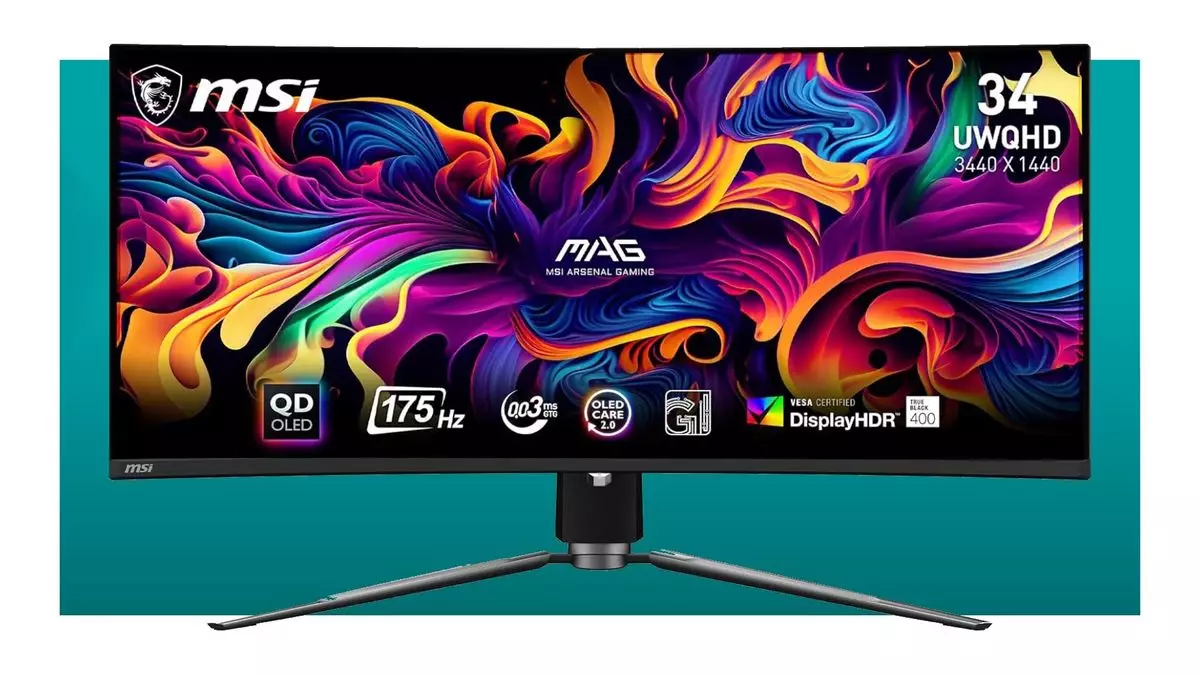In the ever-evolving landscape of gaming monitors, the decision between a 32-inch 4K display and a 34-inch ultrawide monitor presents a formidable dilemma for enthusiasts and casual gamers alike. With various factors at play—including image quality, performance, and cost—the analysis of the MSI MAG 341CQP ultrawide OLED monitor brings clarity to this complex choice. As such, this article delves into the benefits and drawbacks of both classes of displays to help consumers make an informed decision.
When we discuss monitors, the primary aspects that come to mind are resolution and size. The 32-inch 4K option, such as the MSI MAG 321UP, boasts an impressive pixel density that enhances clarity and detail, making it suitable for a myriad of tasks—be it gaming, graphic design, or multimedia consumption. The crisp images offered by a 4K display are hard to beat, especially when working with high-definition content.
In contrast, the 34-inch ultrawide MSI MAG 341CQP provides a unique viewing experience characterized by its immersive aspect ratio. The 3,440 by 1,440 resolution creates a wide field of vision that allows for enhanced depth in gaming. This format is particularly popular among gamers who crave an enveloping experience that traditional screens struggle to match. The broader canvas not only serves gaming well but also proves advantageous for productivity tasks such as video editing and multitasking across applications.
A substantial consideration in this debate is the financial investment required to maximize each display’s potential. The allure of 4K resolution often comes at a steep price—requiring a powerful graphics card to meet the high demands of rendering over eight million pixels. Essentially, a hefty investment could lead to total costs soaring between $1,700 and $1,800 when you factor in the GPU.
Conversely, the ultrawide 34-inch monitor requires comparatively less graphical horsepower, with many gamers finding that a $600 GPU like the Nvidia RTX 4070 Super can deliver satisfactory performance for most titles. This affordability results in an overall cost of ownership that hovers closer to $1,000, making the ultrawide option significantly more attainable for those not wishing to break the bank on an expansive gaming setup.
Highlighting a critical feature shared by both options is the OLED display technology. With the MSI MAG 341CQP utilizing a QD-OLED panel from Samsung, users can experience striking HDR performance and impressive full-screen brightness that elevates the overall aesthetic of games and media consumption. Coupled with exceptional pixel response times at just 0.03 milliseconds, the ultrawide panel promises a fluid experience, particularly in fast-paced gaming scenarios.
However, users must remain vigilant regarding the infamous concern of screen burn-in, a dilemma unique to OLED displays. While modern iterations of OLED technology have shown improved resistance to this issue, the uncertainty remains as to how these monitors will age over time. The potential for burn-in will make some users wary, even with a provided three-year coverage. Ultimately, as technology progresses, continuous monitoring of these panels will reveal insights into their long-term performance.
In a landscape where both 32-inch 4K and 34-inch ultrawides present compelling advantages, the choice hinges on individual priorities—whether they be maximum pixel integrity or immersive gaming experiences. The MSI MAG 341CQP caps off this comparison by presenting an enticing balance of affordability and performance that may sway many towards the ultrawide format.
For dedicated gamers who thrive on immersion or professionals who juggle multiple applications, the ultrawide monitor serves as an enviable investment. Yet, those seeking cutting-edge image detail and pixel density may find solace in the 4K displays, provided their budget permits a robust accompanying GPU. As technology advances, the question of preference will continue to evolve, leading to new, innovative choices in the dynamic monitor market.

